Linux Mint stands out as a popular Linux distribution due to its speed, stability, and customization options. Its minimal hardware requirements make it suitable for older machines, and users can choose from four distinct desktop environments.
The operating system offers a vast library of open-source applications that are straightforward to download and install. Keeping these applications up-to-date is also a quick process. This guide provides detailed instructions on installing and updating apps on Linux Mint.
Installing applications
There are several methods to install software on Linux Mint, including using the default package manager, the command line interface, or downloading directly from application websites. The recommended approach is using the Synaptic Package Manager, which ensures all necessary dependencies are installed alongside the desired application.
Using the Synaptic Package Manager
The Synaptic Package Manager allows users to browse and install thousands of packages, handling all required libraries and dependencies automatically.
Step 1: On your Linux Mint desktop, click the 'Menu' button located in the lower-left corner to open the application menu.
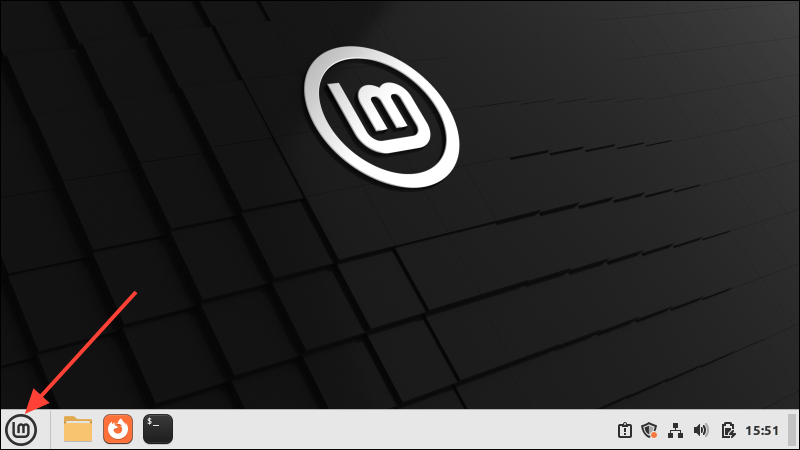
Step 2: Type Synaptic Package Manager into the search bar and select it from the search results.
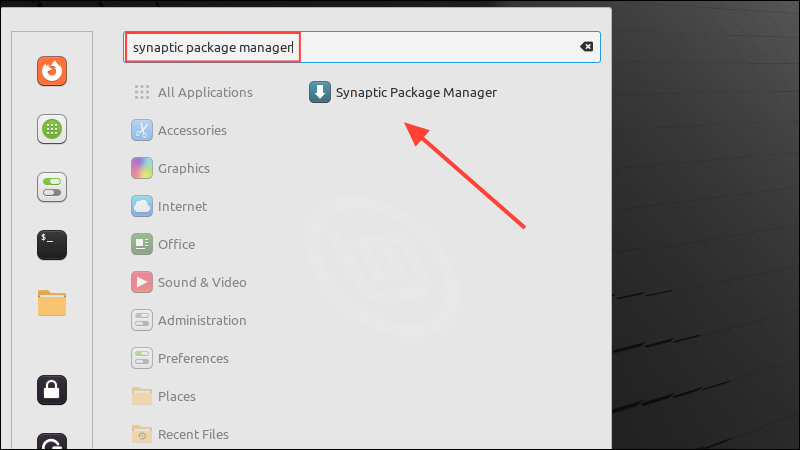
Step 3: When prompted, enter your password in the authentication box and press the 'Enter' key or click the 'Authenticate' button.

Step 4: The first time you open Synaptic Package Manager, a welcome message will appear. Click the 'Close' button to proceed to the main interface.

Step 5: Click the 'Search' button at the top right corner to look for the application you wish to install.

Step 6: In the search dialog, enter the name of the application, such as VLC Media Player, and click 'Search'.
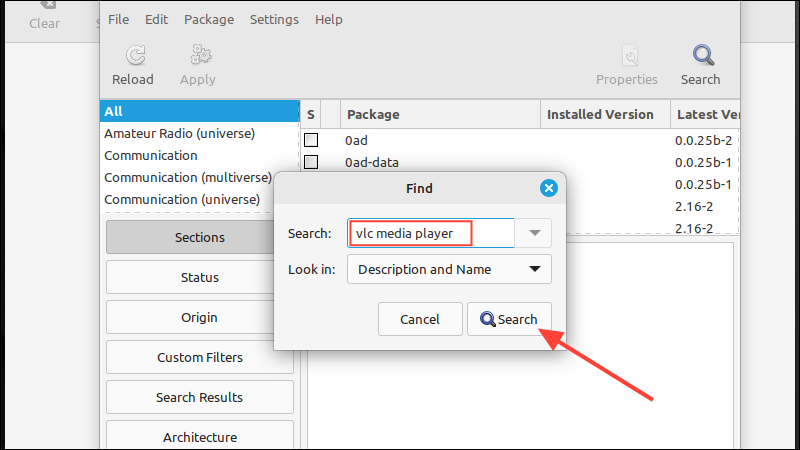
Step 7: Browse through the search results and locate 'VLC'. Click on it to select it.

Step 8: Right-click the checkbox next to 'VLC' and choose 'Mark for Installation' from the context menu.

Step 9: A dialog will appear showing all the additional dependencies required for VLC to run. Click the 'Mark' button to accept and proceed.
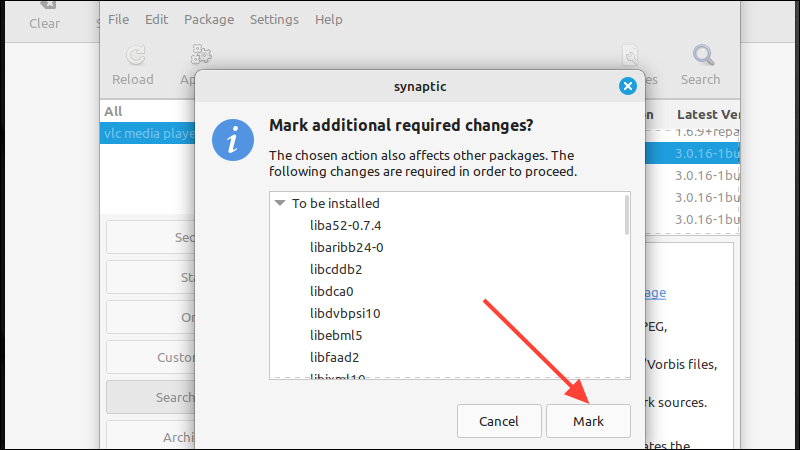
Step 10: The packages to be installed will be highlighted in green. Click the 'Apply' button at the top to begin the installation process.
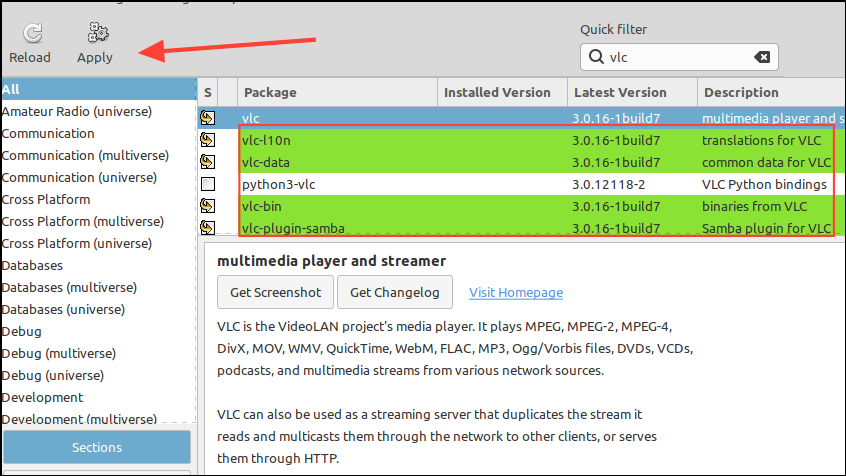
Step 11: A summary of the changes will be displayed, showing the packages to be installed. Click 'Apply' to confirm and start downloading.

Step 12: The Synaptic Package Manager will begin downloading VLC and its dependencies.
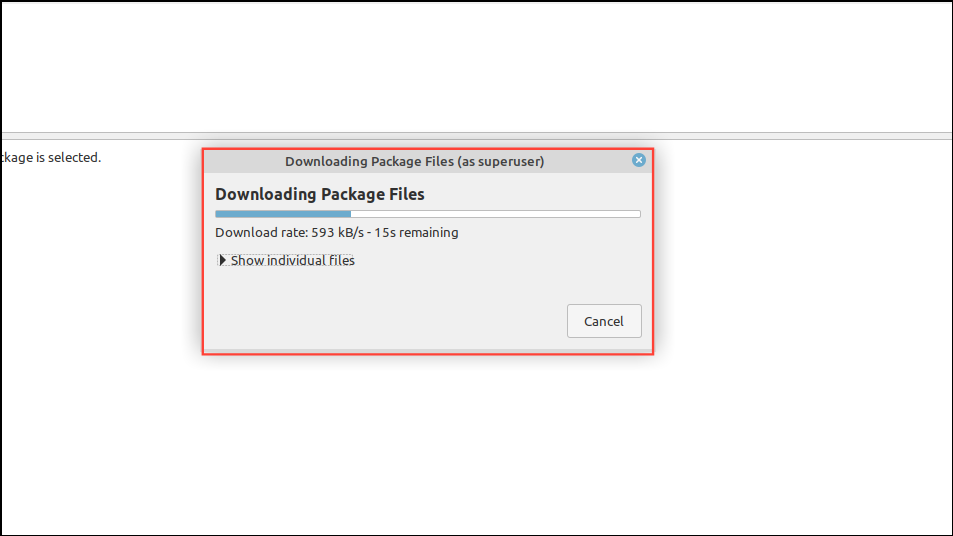
Step 13: After the download completes, the installation will proceed automatically. Wait for the process to finish.
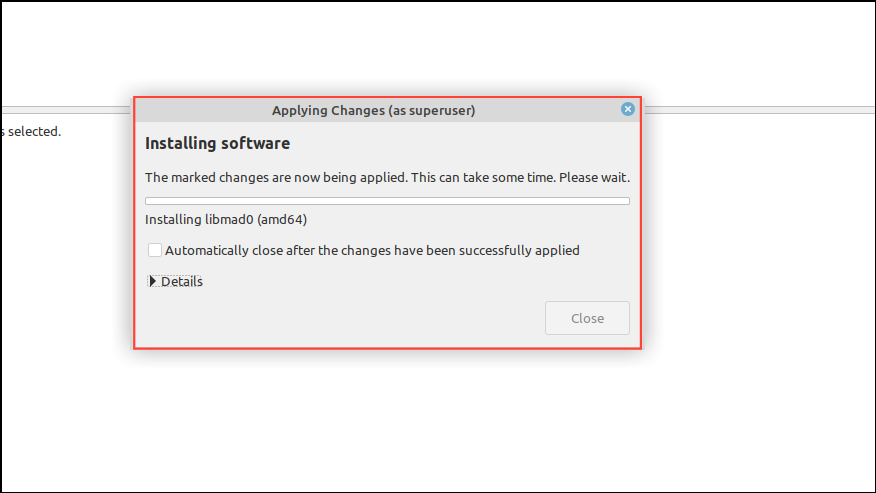
Step 14: Once installation is complete, you can find VLC in the Mint menu. Click the 'Menu' button and search for 'VLC'.
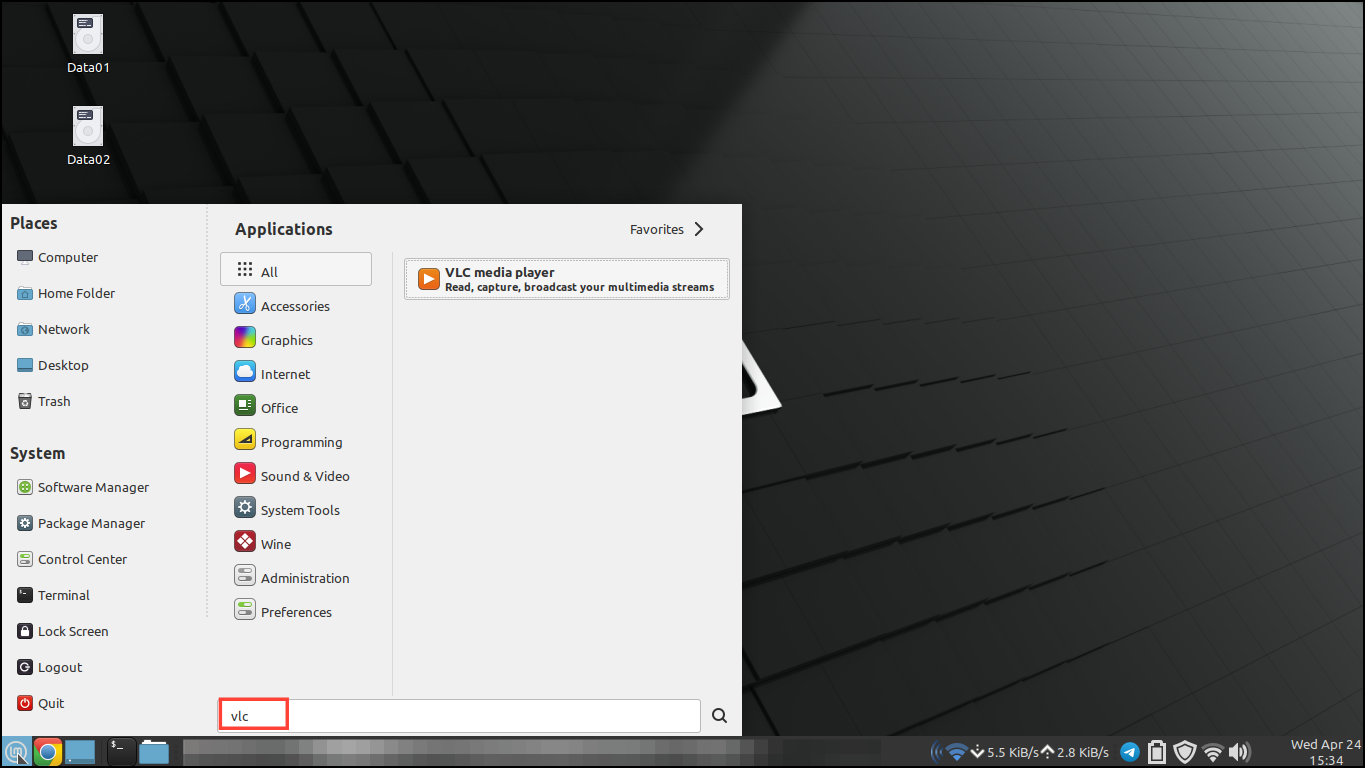
Step 15: Click on 'VLC Media Player' from the search results to launch the application.
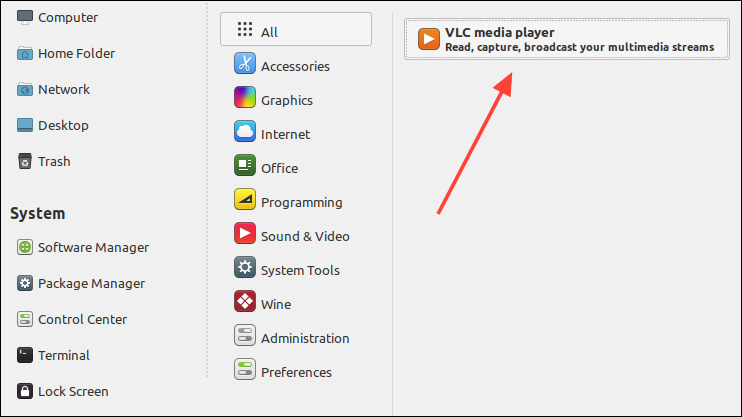
Using the command line interface
For users comfortable with the terminal, the command line offers a quick way to install applications.
Step 1: Open the Terminal by clicking its icon on the panel or using the keyboard shortcut Ctrl + Alt + T.

Step 2: To install an application, type the command sudo apt install [application-name] in the Terminal. For example, to install CherryTree, enter sudo apt install cherrytree and press the 'Enter' key.
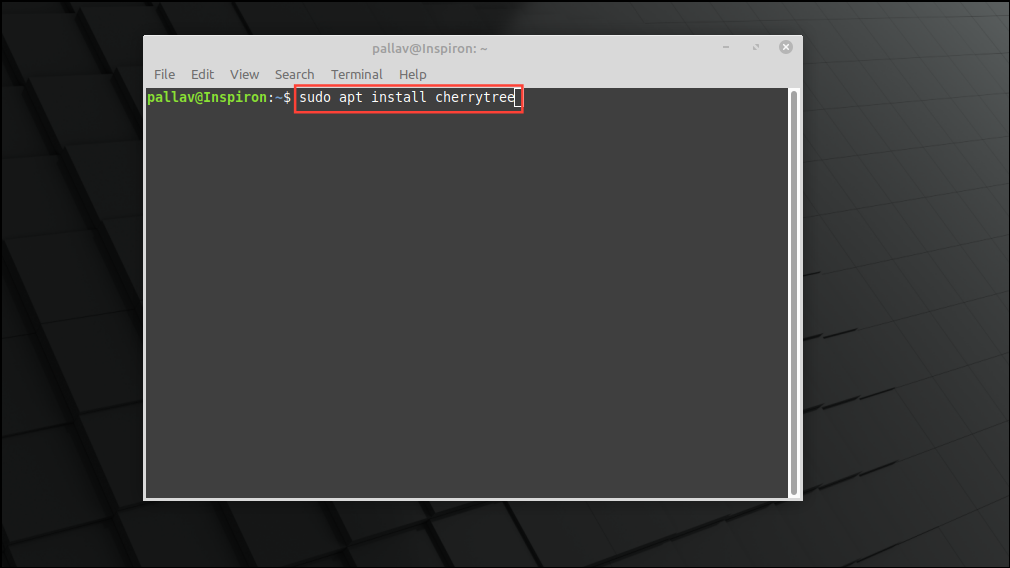
Step 3: When prompted, enter your user password and press 'Enter' to proceed.

Step 4: The terminal will display the packages to be installed and prompt for confirmation. Type Y and press 'Enter' to continue.

Step 5: Wait while the application and its dependencies are downloaded and installed.
Step 6: Once installation is complete, you can launch the application from the Mint menu. Click 'Menu' and search for 'CherryTree'.
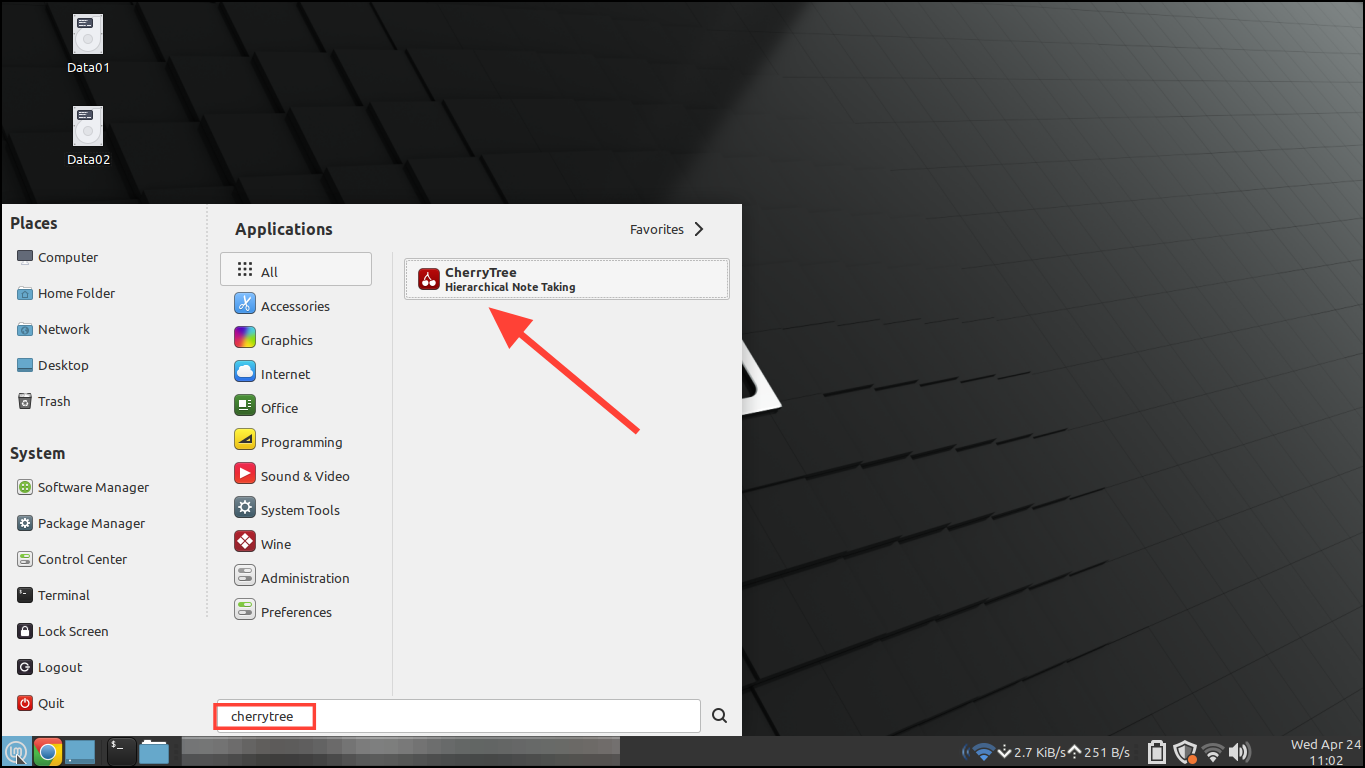
You can install other applications in the same way by replacing [application-name] with the name of the desired software.
From application websites
Some applications can be installed directly from their official websites, which may offer the latest versions or software not available in the package manager.
Step 1: Visit the application's official website. For example, to install the Edge browser, go to its download page and select the .deb package suitable for Linux Mint.
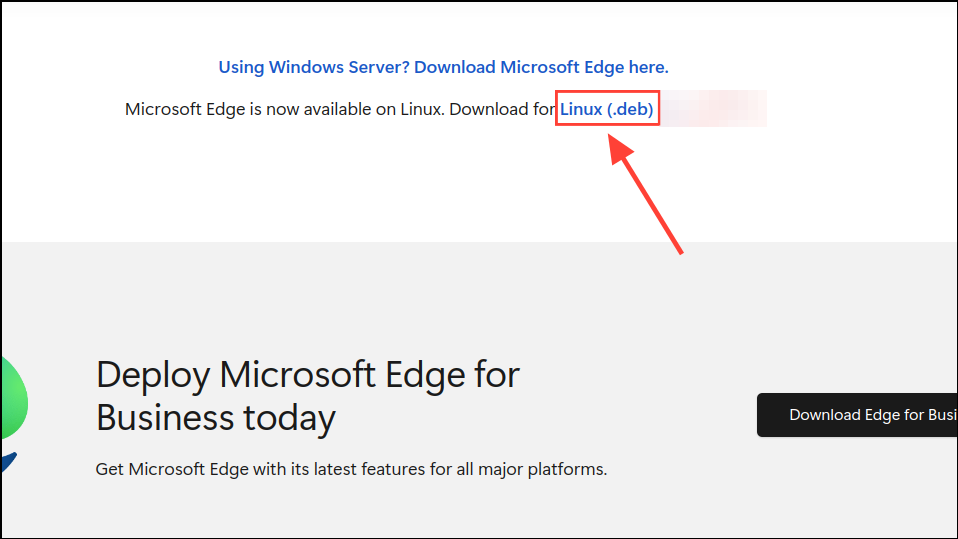
Note: When downloading installers directly, ensure you select the .deb package for Debian-based systems like Linux Mint.
Step 2: Accept the license terms by clicking the 'Accept and Download' button.

Step 3: Save the .deb installer file to your computer. Once the download is complete, open the file to launch the package installer. Click 'Install Package' to proceed.

Step 4: You will be prompted for your password. Enter it in the authentication box and press 'Enter'.

Step 5: Wait for the installation to complete. The package installer will notify you when the process is finished.
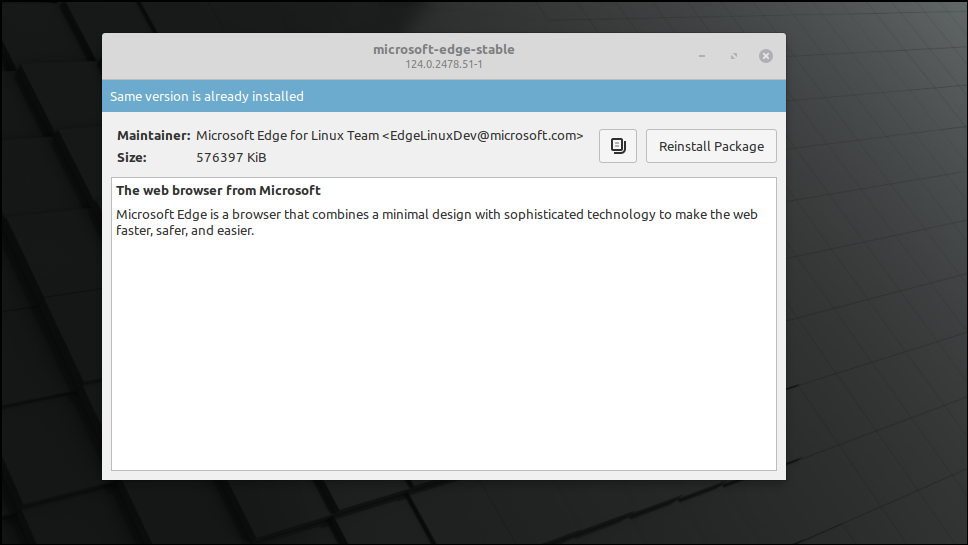
Step 6: To launch Edge, click the 'Menu' button and search for edge browser. Select it from the search results.
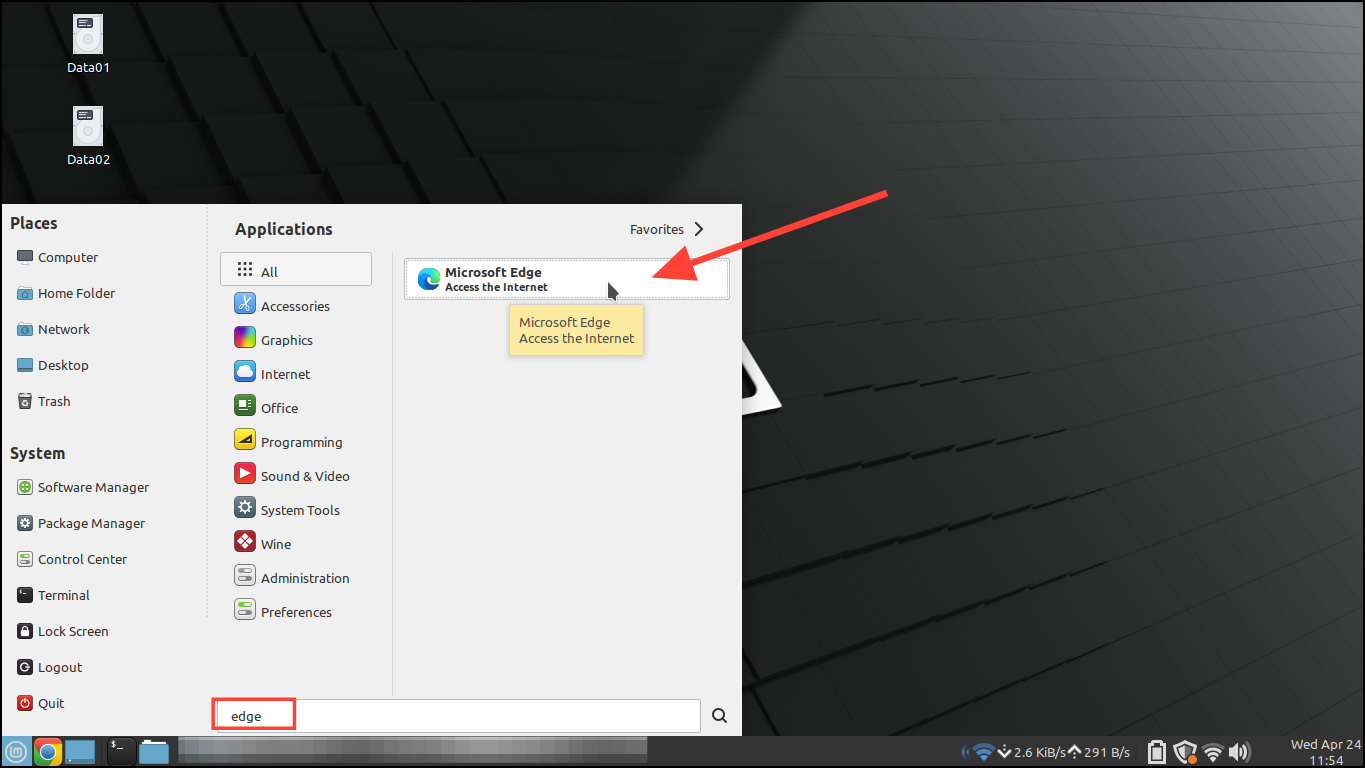
Updating apps
Keeping your applications up-to-date on Linux Mint is straightforward. The system automatically checks for updates and notifies you when they are available, allowing you to choose when to install them.
With the Update Manager
Step 1: When updates are available, a shield icon with a notification dot will appear on the lower right side of the panel. Click this icon to open the Update Manager.
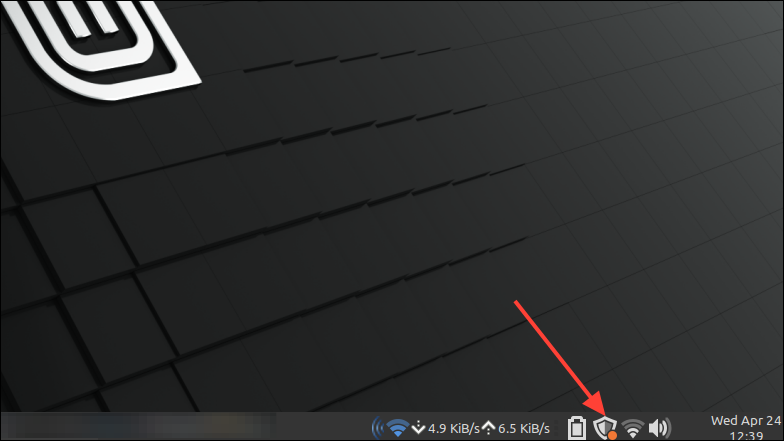
Step 2: In the Update Manager, you will see a list of available updates for both system components and installed applications. Check or uncheck the boxes to select the updates you wish to install.
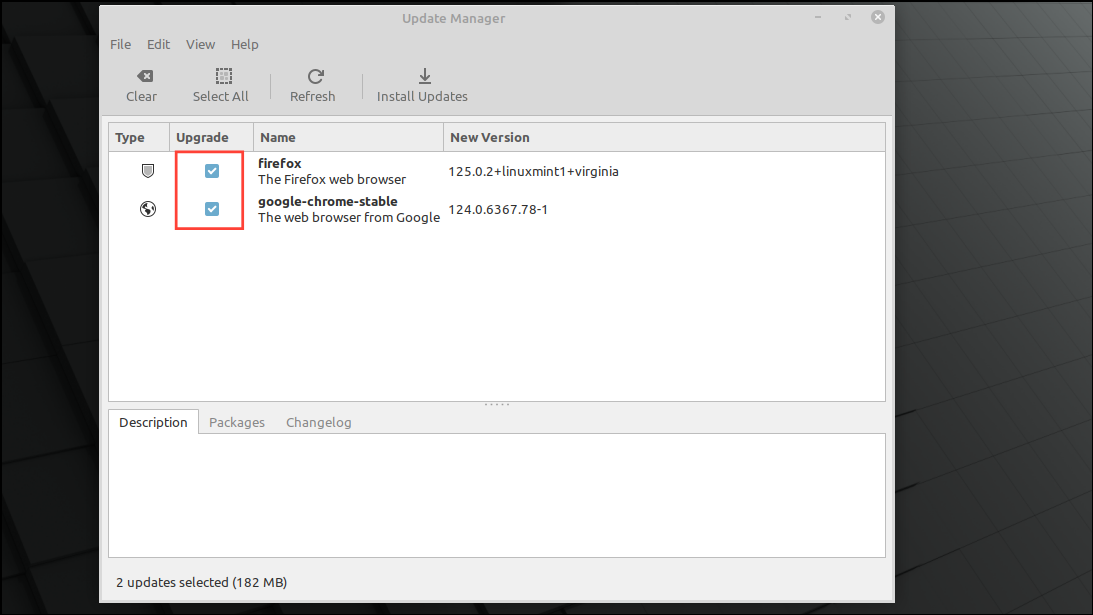
Step 3: After making your selections, click the 'Install Updates' button at the top.
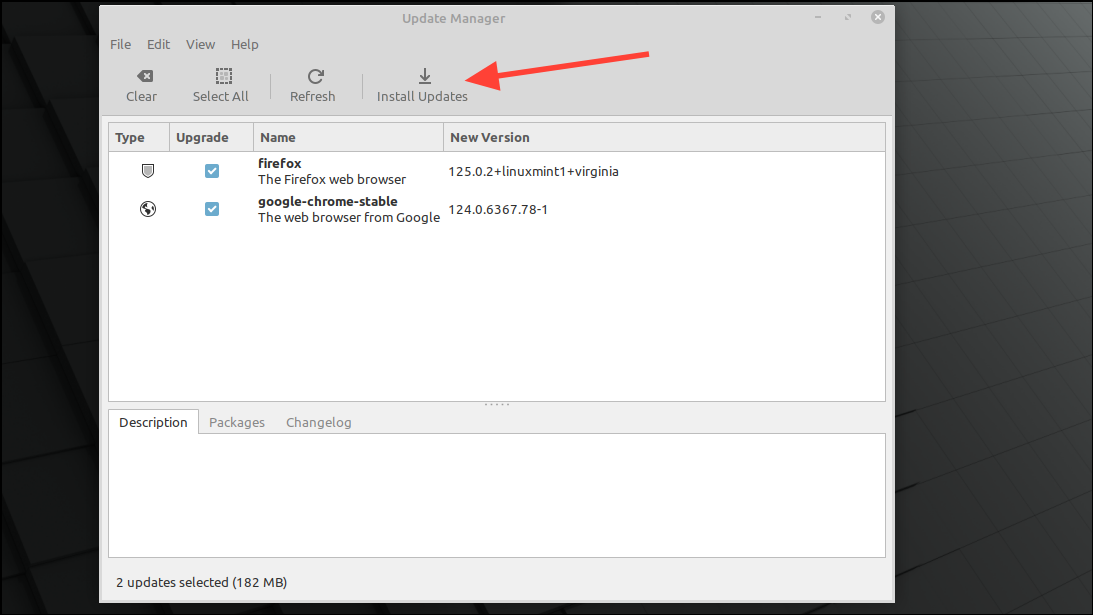
Step 4: You will be prompted for your password. Enter it and click 'Authenticate' or press 'Enter' to proceed.
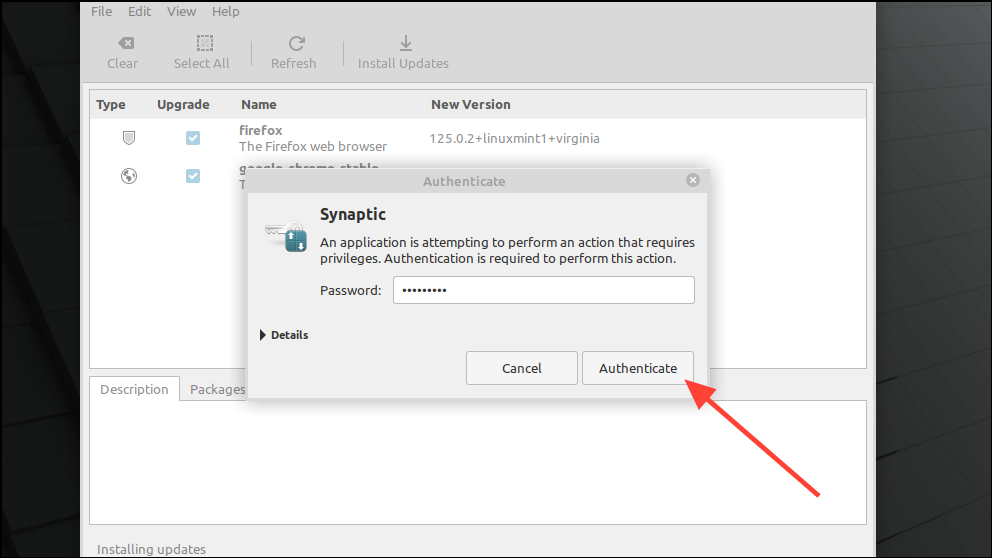
Step 5: The Update Manager will download and install the selected updates. Once complete, it will check for any additional updates and notify you when all updates are installed.
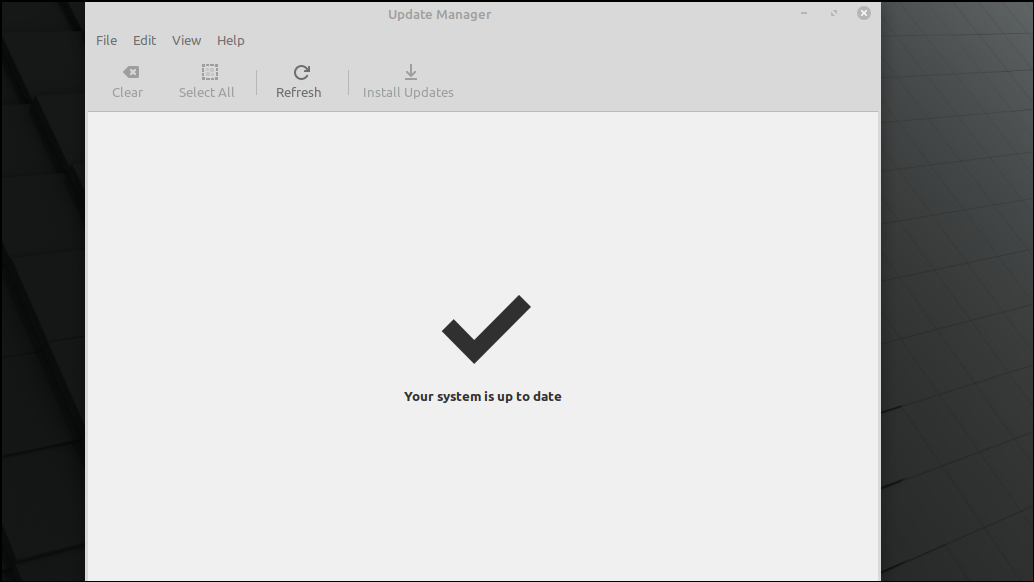
Note: The default settings in the Update Manager are suitable for most users. Advanced users can customize these settings to control how updates are handled.
Via the Terminal
You can also update your system using the Terminal.
Step 1: Open the Terminal by clicking its icon on the panel or pressing Ctrl + Alt + T.
Step 2: To check for updates, enter the command sudo apt-get update and press 'Enter'.
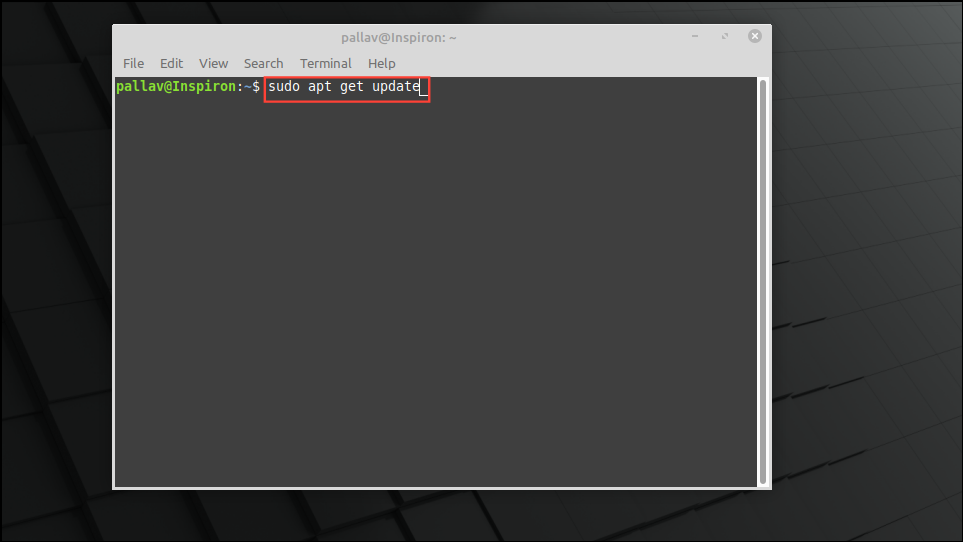
Step 3: When prompted, type your password and press 'Enter'.
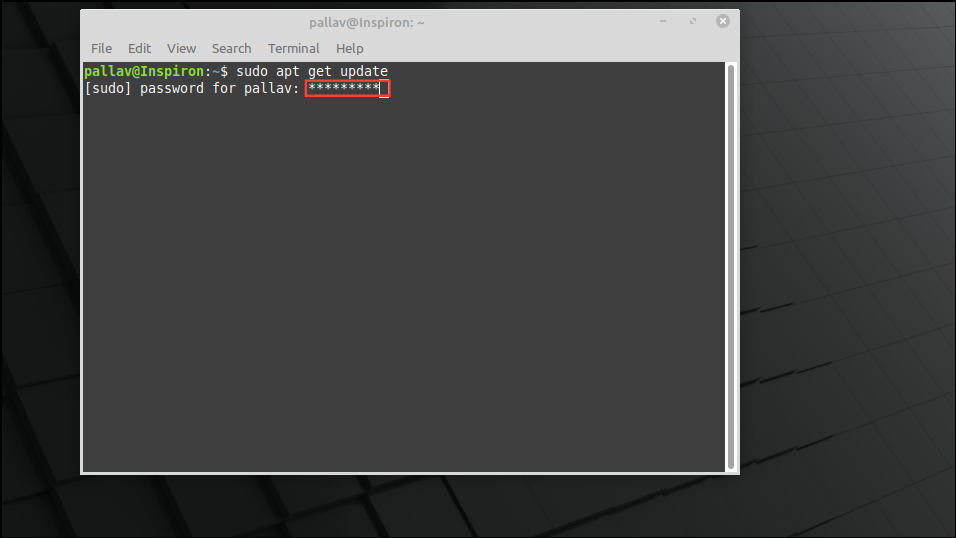
Step 4: After updating the package lists, you can upgrade the installed packages by running sudo apt-get upgrade. The Terminal will display the packages to be upgraded and prompt for confirmation. Type Y and press 'Enter' to proceed.
Your system will download and install the updates. Once the process is complete, your applications and system components will be up-to-date.
Installing and updating applications on Linux Mint is straightforward, whether you prefer using graphical tools or the command line. The system gives you complete control over updates without forcing restarts, ensuring a smooth and efficient experience.







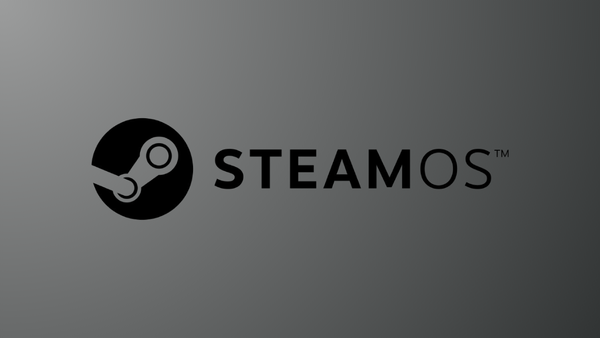


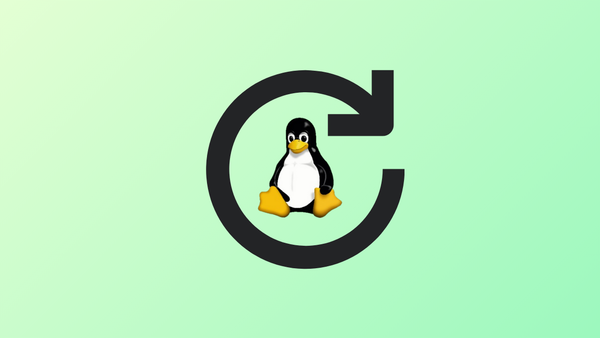
Member discussion